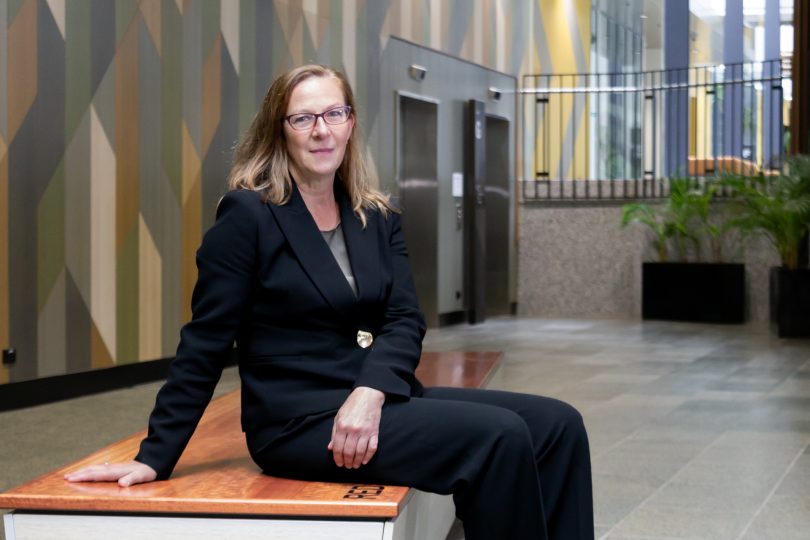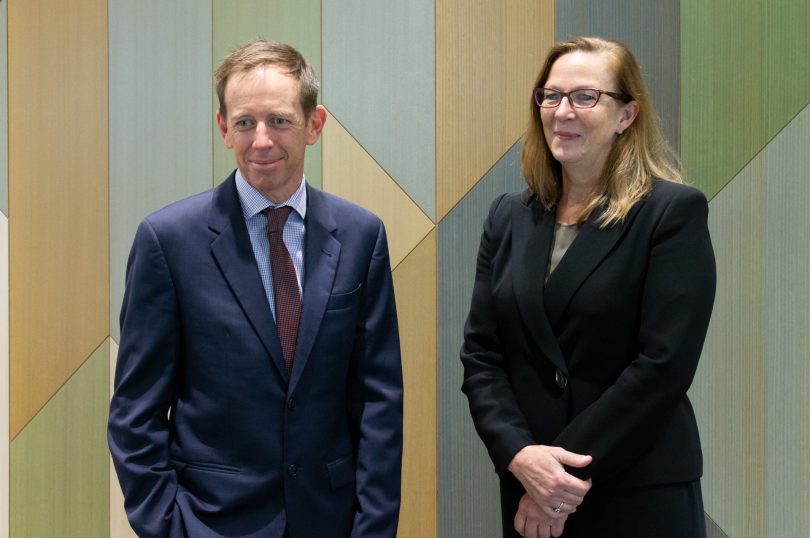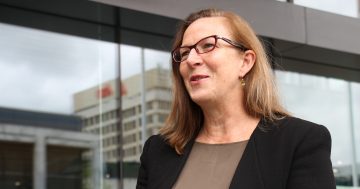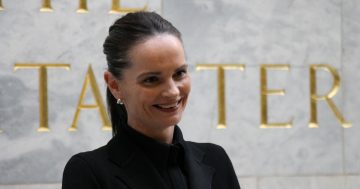
The new ACT Supreme Court Chief Justice Lucy McCallum was sworn in on Tuesday, which was also International Women’s Day. Photo: Albert McKnight.
The new chief justice for the ACT wants more money spent on a proactive approach to preventing incarceration, so less is spent putting people in jail.
Chief Justice Lucy McCallum was sworn in to the ACT Supreme Court and welcomed to the Territory on Tuesday, 8 March, while the former chief justice Helen Murrell was also thanked for her work in the role since 2013.
“Chief Justice McCallum’s passion for reducing the overrepresentation of Aboriginal and Torres Strait Islander people in the justice system will be of great assistance in improving the way we do justice in the Territory,” Attorney-General Shane Rattenbury said.
Chief Justice McCallum described the over-incarceration of First Nations people as a “national tragedy” and said everyone needed to become part of the conversation around the issue.
She also wanted to open a conversation around “building communities, not prisons” as well as “addressing endemic problems rather than coming in as a repairer”.
For instance, she said she had heard it reported Australia spent 97 per cent of flood relief funding “mopping up” after such disasters and three per cent of the budget preparing for them.
“It’s the same idea. We need to spend more money investing in preventing the problem and dysfunctional family circumstances so that we spend less money incarcerating people,” she said.
Chief Justice McCallum was sworn in on International Women’s Day and when asked what she thought about the level of representation of women in Australia’s judiciary and what could be done to encourage more to join, she said she was not in favour of quotas.
“I think the way to encourage greater representation is to have women in leadership who can then support other women,” Chief Justice McCallum said.
“I have had the good fortune to be immensely supported by a group of female judges younger than me.
“Younger women now coming through have created this beautiful network of support and [have been] looking after each other and I think that’s what will develop and encourage more women to persevere to get to positions of leadership.”

Attorney-General Shane Rattenbury welcomed the new Chief Justice Lucy McCallum at her swearing in on Tuesday. Photo: Albert McKnight.
She added the ACT Supreme Court had an “excellent” level of representation, with an equal number of “judicial brothers and judicial sisters”.
Chief Justice McCallum also talked about the need for the courts to have a media officer to assist journalists and she wanted to look at a one-way social media page run by the courts to help provide case summaries to the public.
Chief Justice McCallum’s predecessor Ms Murrell was the first woman appointed as chief justice for the Supreme Court.
“Under her leadership of the ACT Supreme Court, the Drug and Alcohol Sentencing List was established, new case management and listing practices saw a significant reduction in hearing delays and the challenges of the COVID-19 pandemic for the court were successfully navigated,” Mr Rattenbury said.
“These adaptations in procedure have amounted to very real improvements in the lives of people coming before the court and they provide a fantastic basis to continue this legacy.”
He said Chief Justice McCallum had an extensive legal career and was appointed a judge of the NSW Supreme Court in 2008 as well as in the NSW Court of Appeal in 2019.




















